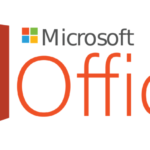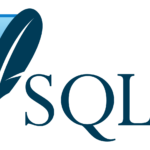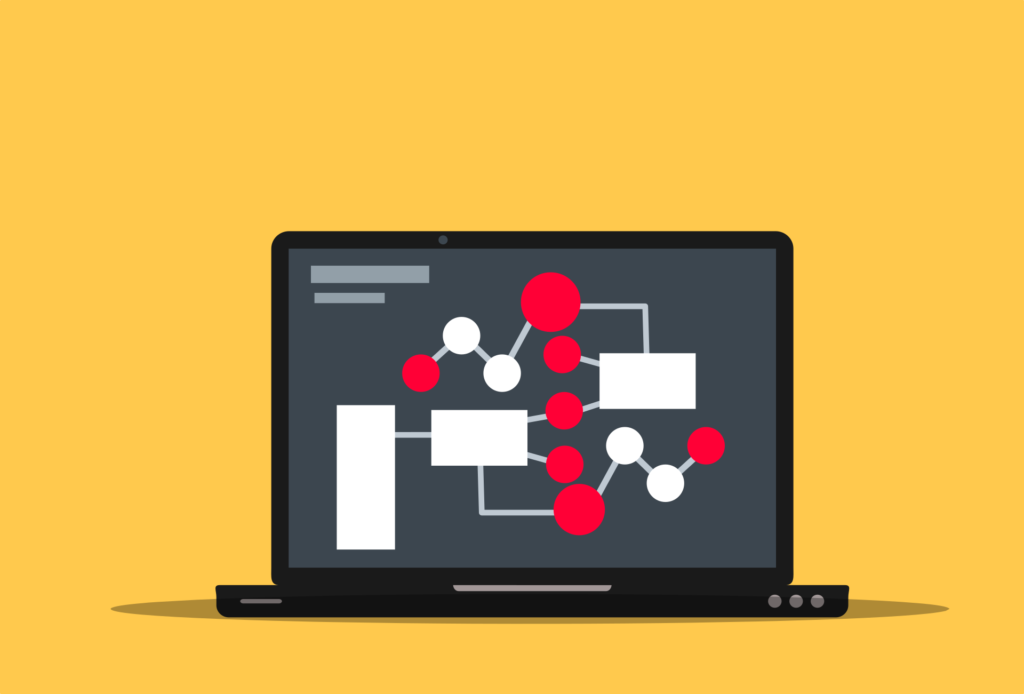Magento Programming
The open-source e-commerce platform Magento programming offers companies a versatile and scalable alternative for setting up and running online stores. It was first created by Varien Inc., which later changed its name to Magento Inc., and is currently owned by Adobe Inc. A vast range of features and functions are available on the platform to build reliable and scalable online businesses.

Since Magento programming is recognized for its adaptability and scalability, it can be used by companies of various sizes, from small startups to huge corporations. Users can extend and alter the platform in accordance with their own demands thanks to its modular architecture. The platform interfaces with a number of third-party extensions and services and offers a number of different payment methods and delivery alternatives.
Important Magento’s programming key features are.
- Product catalogue management – By categorizing items, establishing unique qualities, and controlling stock levels, Magento enables businesses to effectively manage their product inventories.
- Cart and checkout features – These features, which include one-page checkout, guest checkout, and the option to store carts for later, give customers a smooth purchasing experience.
- Search engine optimization (SEO) – Magento comes with tools and features that are built-in to optimize online stores for search engines, assisting companies in enhancing their visibility and ranks in search results.
- Mobile-friendly and responsive design – In light of the growing popularity of mobile shopping, Magento offers responsive design themes and makes sure that online stores are mobile-friendly and usable on a variety of devices.
- Support for numerous stores and languages – Magento enables companies to manage several web stores from a single backend, enabling them to target various markets and geographical areas. Multiple languages and currencies are also supported.
- Extensions and integrations – The platform includes an extensive marketplace for add-on extensions and connectors that offer extra functions like sophisticated analytics, marketing automation, CRM connection, and more.
Last but not least, Magento programming is a robust and feature-rich e-commerce platform that enables companies to efficiently develop and manage their online stores by providing a highly flexible and scalable solution to match their specific needs.
What is magento
PHP is a computer language that was used to create the e-commerce platform known as Magento programming. Building online stores and running e-commerce websites, it is a strong and well-known open-source framework.
For its server-side processing and backend architecture, Magento uses the PHP programming language. PHP is an appreciated scripting language for building websites that is known for its adaptability and simplicity. It enables the creation of dynamic web pages and numerous e-commerce-related operations including processing orders from customers, maintaining product catalogs, managing payments, and more.
Model-View-Controller (MVC) architecture is used in Magento, which is created in PHP. The MVC pattern aids in separating the presentation layer from the application logic, increasing the code’s modularity and maintainability.
Magento programming offers a strong and flexible framework for developing online businesses with capabilities like catalog management, shopping cart functionality, payment gateway integration, order processing, and customer administration by utilizing PHP. Additionally, by writing PHP code and using Magento’s large library of modules and extensions, developers may enhance and modify Magento’s capabilities.
Finally, Magento programming is a PHP-based e-commerce platform that enables programmers to build dynamic, feature-rich web stores by utilizing the strength and adaptability of the PHP programming language.
Advantage and disadvantage of magento programming
Benefits of Magento.
- Flexibility and customization – Magento provides a high degree of customization and flexibility choices, enabling businesses to build distinctive and specialized online stores that conform to their particular needs. Businesses may alter the operation and appearance of their stores because of its modular architecture, and a vast selection of themes, extensions, and plugins.
- Scalability – Magento is capable of handling thousands of goods, orders, and concurrent users and was designed to handle large-scale e-commerce websites. Businesses may increase their online stores as their consumer base expands thanks to their strong performance and scalability.
- Feature-Rich Platform – Magento has a wealth of capabilities right out of the box, including administration of product catalogs, capability for shopping carts, choices for payments and shipping, SEO optimization, customer management, and more. It offers a strong base for creating sophisticated e-commerce websites without having to depend substantially on bespoke development.
- Community and Support – Magento has a huge and vibrant community of users, designers, and developers that support and contribute to its continuing development. The community provides tools, guides, forums, and extensions to assist companies to improve their online stores, fixing problems, and learning best practices.
The drawbacks of Magento .
- Complexity – Compared to certain other e-commerce platforms, Magento might be more difficult and call for a greater degree of technical experience. There may be a learning curve while setting up and customizing Magento, especially for non-technical individuals. Complex functionality implementation or platform customization may call for expert developer support or extensive PHP programming knowledge.
- Server needs and performance optimization – Due to its extensive feature set and scalability, Magento might have resource-intensive server requirements. For a Magento store to run well, dedicated hosting resources, frequent performance monitoring, and optimization may be needed.
- Price – Although the Magento Community Edition is free to use, there may be expenses for hosting, development, theme modification, extensions, and continuing maintenance. Additionally, the corporate edition of Magento Commerce has licensing costs that small firms may find prohibitive.
- Upgrade Difficulties – Upgrading Magento to newer versions can occasionally be difficult, particularly if the shop has many third-party extensions or customizations. During the update process, compatibility problems, migration challenges, and possible downtime may appear, necessitating careful preparation and execution.
Best characteristics of magento programming
One of the top e-commerce systems, Magento is renowned for having a number of exceptional qualities.
Here are some of its strongest qualities.
- Unparalleled Flexibility and Customization Options – Magento provides both. Because of its modular architecture, which enables businesses to customize their online stores to match their unique demands, it is appropriate for companies of all sizes and in all sectors. Developers have limitless customization options because they may alter and expand the platform’s functionality, make their own themes, and include third-party extensions.
- Scalability and Performance – Built for large-scale e-commerce websites, Magento is capable of handling thousands of goods, orders, and concurrent users. Its excellent performance and scalability make it possible for the platform to expand as the business does. Magento can manage high traffic loads and offer a flawless shopping experience when configured and optimized properly.
- Feature-Rich Platform – Out of the box, Magento has a full complement of features and functionalities. It has strong customer management features, customizable pricing and promotion choices, cutting-edge shipping and payment modules, extensive search engine optimization tools. These pre-built capabilities shorten the development process and provide a strong framework for building an online store that works flawlessly.
- Support for various stores and languages – Magento enables the operation of numerous web shops from a single backend. Businesses that operate in many locations or cater to various consumer segments may find this capability to be very helpful. Additionally, Magento has multilanguage support, enabling companies to build localized versions of their stores to accommodate clients from other nations or languages.
- Strong Community and Support – Magento has an active group of users, developers, and designers that actively support and contribute to its growth. The community offers a huge collection of Magento-enhancing extensions, themes, and tools. Users may ask questions, exchange expertise, and work together through forums, documentation, and tutorials.
- Mobile-Responsive Design – Due to the growing significance of mobile commerce, Magento has given mobile responsiveness a lot of attention. It makes sure that online stores created on the platform are optimised for different devices and screen sizes and provides responsive design themes. This enables companies to provide their consumers a smooth purchasing experience across pcs, tablets, and smartphones.
Together, these features make Magento a strong, feature-rich, and highly adaptable e-commerce platform that can serve organizations of all sizes and meet the needs of many industries.
How to Magento log in
Use these methods to log in to a Magento admin panel.
- Launch the web browser of your choice.
- Type the web address for your Magento admin area. Typically, it begins with “/admin” and your domain name (for instance, “https://www.example.com/admin”).
- Your browser will then open the Magento admin login page.
- Type your admin login information and password in the corresponding sections.
- If you wish your browser to remember your login information, you may use the “Remember Me” checkbox.
- To continue, click the “Sign In” or “Log In” option.
- If the supplied login information is accurate, you will be logged into the Magento admin panel and the admin dashboard will be shown.
Remember – Depending on the version and theme of Magento you are using, the precise look and layout of the admin login page may change. Make sure you have the right username and password and that you are typing them correctly if you have any trouble signing in.
Magento development
The process of building and customizing online stores with the Magento e-commerce platform is referred to as Magento programming development. It entails planning, creating, and setting up the various components of a Magento-based website in order to satisfy certain company needs.
The main facets of Magento development are listed below.
- Installation and Setup – Installation and configuration of the Magento platform on a web server often marks the beginning of the development phase. This involves creating a Magento database, setting the server environment, and downloading the required files.
- Design and Customization of Themes – Magento provides a selection of pre-designed themes that may be altered to reflect a company’s branding and design preferences. The theme’s look, feel, color scheme, and typography may all be changed by developers to provide a distinctive and eye-catching online store.
- Extension Integration – Magento offers a significant marketplace of modules and extensions that increase the capabilities of the platform. The store’s functionalities may be improved by developers combining these extensions with systems like payment gateways, delivery companies, customer support systems, marketing tools, and others.
- Custom Development – In addition to using pre-built extensions, programmers can create their own code to add new features or change current functionality to meet particular business needs. Utilizing Magento’s apis, developing unique modules, putting backend logic into place, and interacting with external systems are all required for this.
- Product Catalogue Management – Magento enables companies to effectively manage their product catalog. Developers may create price rules, import and export product data, configure product characteristics, categories, and variants, and implement powerful search and filtering features.
- Configuring the checkout process – including different payment choices, shipping options, tax computations, and order administration, is done by developers. They also set up the shopping cart.
- Performance Optimization – In order to guarantee quick and effective load times, developers enhance the Magento store’s performance by putting techniques like caching, database optimization, code minification, image compression, and CDN integration into practice.
- Testing and deployment – To ensure the stability and operation of the Magento shop, thorough testing is crucial. Before launching the website on a live server, developers do user acceptability testing, unit testing, and integration testing.
- Continuous Maintenance and Support – After the Magento shop is online, developers offer continuous maintenance and support, which includes keeping track of website performance, installing security updates and patches, fixing problems, and introducing new features as needed.
Understanding PHP, mysql, HTML, CSS, and javascript is essential for Magento development, as is being familiar with the Magento framework and development best practices. To guarantee a smooth and effective development process, it is advised to deal with professional Magento developers or development firms.
Magento 2
The most recent version of the Magento e-commerce platform, Magento 2, was introduced in 2015 as a replacement for Magento 1. It offers improved speed, scalability, and an admin interface that is easier to use than the previous version.
Here are some of Magento 2’s main enhancements and features.
- Better Performance and Scalability – Magento 2 now offers quicker page load times and better server responsiveness thanks to performance optimization. It includes technologies like full-page caching and Varnish caching, making shopping easier and quicker. The platform is suited for huge e-commerce websites since it can manage enormous traffic loads more effectively.
- Simplified Admin Interface – The Magento 2 admin panel has undergone a redesign to offer a more intuitive and user-friendly interface. It is now simpler for administrators and merchants to operate their online stores thanks to improvements in navigation and feature organization.
- Mobile-Responsive Design – Because Magento 2 was developed with a mobile-first strategy, all web stores built on the platform are completely responsive and mobile device optimized. Customers are able to shop seamlessly across multiple screen sizes and devices thanks to this.
- Improved Checkout Process – Magento 2’s checkout procedure has been streamlined and made simpler, which lowers cart abandonment rates. It contains functions including the option to check out as a guest, automatically validate addresses, and save payment information for further transactions. With several payment and delivery options, the checkout process may be further enhanced and customized.
- Modular framework – Magento 2 has a modular framework that makes extension creation and customization simpler. The platform is segmented into several modules, increasing its flexibility and allowing developers to alter and expand certain capabilities without affecting the system as a whole. This improves the Magento 2 stores’ ability to maintain and scale.
- Greater Third-Party Integration Options – Magento 2 provides greater third-party integration options. In order to interface with external apps, crms, erps, and other systems more easily, it offers improved API support. This makes business process automation and smooth synchronization of data possible.
- Upgraded Technology Stack – Modern frameworks and technologies are used by Magento 2, including PHP 7, HTML5, CSS3, and javascript libraries like jquery and Knockout.js. As a result, the environment is more favorable to developers and has higher performance and security.
- Extension Marketplace – The Magento Marketplace, a special marketplace for Magento 2, allows developers to display and advertise their extensions and themes. The functionality of Magento 2 shops may be expanded and improved in a variety of ways thanks to this.
For businesses of all sizes, Magento 2 delivers a reliable and feature-rich e-commerce solution. It is a well-liked option among developers and retailers because to its greater customization features, simpler admin interface, and improved performance upgrades. However, considering the variations in architecture and database structure between the two versions, a migration from Magento 1 to Magento 2 may necessitate careful preparation and execution.
Magento marketplace
It is legal for developers and merchants to sell their Magento extensions, themes, and other relevant goods on the Magento Marketplace. It acts as a hub for the Magento community to find, buy, and install extensions that improve the accessibility and aesthetic appeal of online businesses built on the Magento platform.
The Magento Marketplace’s most important features are shown below.
- Marketplace for Extensions and Themes – Numerous extensions and themes are available in the Magento Marketplace to enhance and personalize the functionality of Magento stores. Payment gateways, shipping companies, marketing tools, SEO optimization, analytics, customer care systems, and other services are examples of these. To meet different corporate demands, the market offers a wide variety of products.
- Quality Assurance – To guarantee quality, security, and compliance with Magento coding standards, all extensions and themes offered on the Magento Marketplace undergo a thorough review procedure. This promotes the maintenance of high standards for goods and inspires confidence in businesses searching for trustworthy solutions.
- Ratings and Reviews – Users may rate and evaluate extensions and themes they have used on the Magento Marketplace. This aids decision-making by retailers by allowing them to consider the opinions and experiences of other customers.
- Compatibility and Updates – The extensions and themes offered on the Magento Marketplace are frequently made to work with particular Magento versions. Developers are in charge of maintaining their goods with the most recent Magento versions and releasing regular updates to fix any problems or provide new features.
- Vendor assistance – The Magento Marketplace’s vendors are in charge of offering customer assistance for their goods. Help with installation, configuration, troubleshooting, and customer support are a few examples of this. When choosing extensions or themes, it’s vital to keep in mind that the level and caliber of assistance offered by different vendors may differ.
- Purchasing and Setup – Merchants may buy extensions and themes straight from the Magento Marketplace. Once purchased, they are simply installed through the Magento admin panel by following the installation instructions that are given. The Marketplace provides a simpler procedure for controlling product installs and licenses.
For developers and retailers, the Magento Marketplace is a helpful resource that offers a simple way to research, assess, and buy extensions and themes for Magento-based online businesses. It encourages cooperation among members of the Magento community and supports the expansion of the Magento ecosystem.
Magento download
Follow these instructions to download Magento programming.
- Go to https://magento.com to access the Magento website.
- Select “Products” from the menu at the top of the page.
- Choose “Open Source” (formerly known as Magento Community Edition) or “Commerce” (previously known as Magento Enterprise Edition) from the dropdown menu, depending on your needs.
- The Magento Open Source or Magento Commerce page will be displayed to you.
- Click the “Get Started” or “Download Now” button on the relevant page.
- Create a Magento account if asked, or sign in with one you already have, if not.
- You will be sent to the Downloads area after you have logged in.
- Choose the Magento version you wish to download from the list of choices.
- Depending on your server configuration, select the right package (such as a ZIP or TAR file).
- Read the Magento Software License Agreement, then accept it.
- To begin the download, click the “Download” button.
You will get the Magento installation package on your local PC after the download is finished. Following the official Magento manual or installation instructions, you can then move forward with installing and configuring Magento on your web server.
Magento api
With the help of a thorough API (Application Programming Interface) offered by Magento, developers may connect with the platform and increase its capabilities. Integration with other systems, mobile apps, bespoke development initiatives, and other systems is made possible through the API.
Here are some important details regarding the Magento API.
- REST API – With the release of Magento 2, a robust REST (Representational State Transfer) API that follows to restful principles was added. On a variety of entities, including items, customers, orders, and categories, it enables developers to carry out CRUD (Create, Read, Update, Delete) activities. Both JSON and XML formats for exchanging data are supported by the REST API.
- SOAP API – Both Magento 1 and Magento 2 supported the SOAP (Simple Object Access Protocol) API, which is another feature offered by Magento. In comparison to the REST API, the SOAP API provides a larger variety of capabilities and allows more complex tasks like building shopping carts, controlling inventories, and producing reports. It exchanges data via XML.
- Resources That Are Available – The Magento API exposes a large selection of resources that address different facets of the e-commerce platform. Products, categories, clients, orders, shipments, bills, payment options, and more are examples of common resources. Each resource has a unique set of API endpoints and operation methods.
- Authentication and Security – In order to use the Magento API, developers must use an authentication method to verify the authenticity of their requests. This often involves obtaining an access token or authenticating and authorizing via oath. Only authorized users and programs can communicate with the Magento API thanks to these security safeguards.
- Custom API Development – Developers can produce their own custom API endpoints to provide certain features or interact with unique modules in addition to the standard API resources. For creating custom API resources and providing correct authentication and validation, Magento offers a framework and instructions.
- Extension Integrations – A lot of third-party extensions and integrations provide access to Magento through their own API endpoints. By interacting with different services including payment gateways, shipping providers, marketing tools, CRM systems, and more, these extensions may increase the capabilities of Magento. These extensions’ corresponding apis may be used by developers to expand the functionality of their Magento stores.
The Magento API documentation offers comprehensive details on the resources, endpoints, request/response formats, authentication techniques, and use examples that are accessible. It is a useful tool for programmers that want to connect Magento to other systems or create original apps.





































































































































































